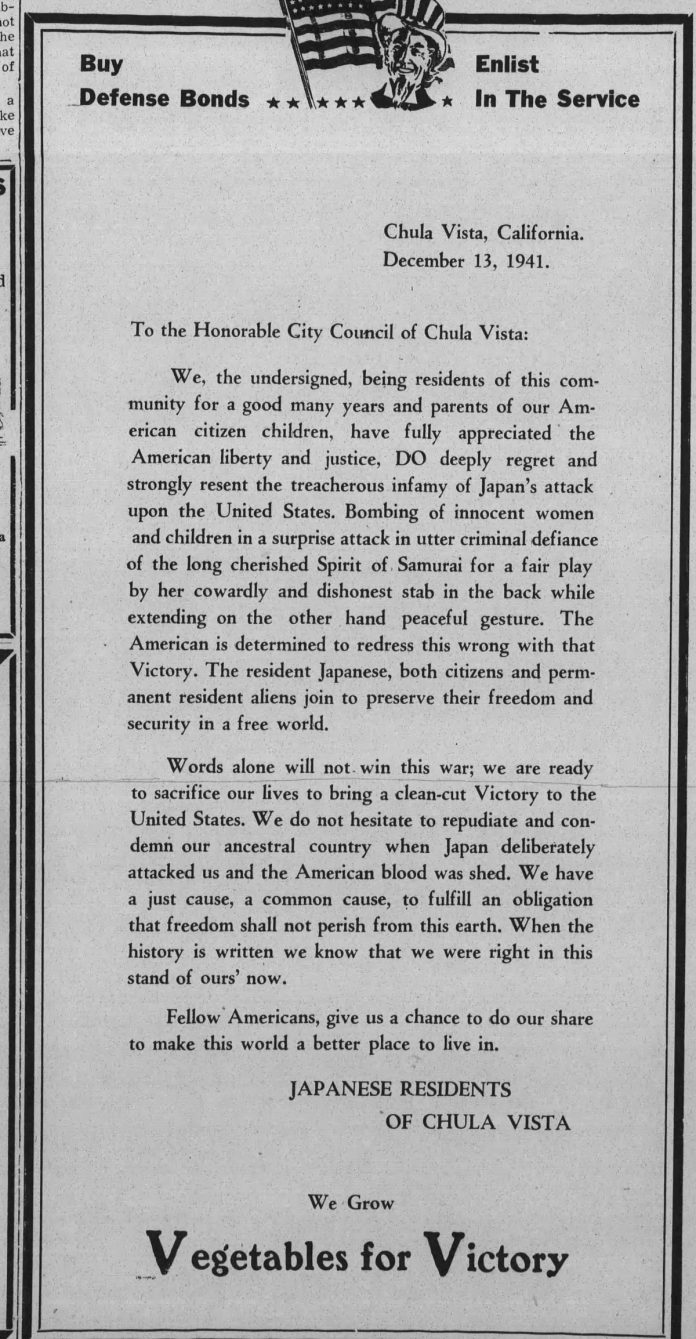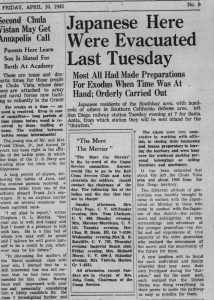
Two days before the Japanese military attacked Pearl Harbor, Hawaii, on Dec. 7, 1941, The Chula Vista Star published a story on its front page. Its headline: “‘True Americans’ is Statement of Nisei Citizens.”
Nisei is a Japanese term for someone born in the United States to Japanese immigrants.
The story quoted then Rear Adm. Charles A. Blakely and his “plea for understanding was in behalf of citizens of Japanese ancestry.” As we know, anyone born in the United States, regardless of their ancestry, is considered a citizen. Given Japan’s evolving role in World War II at the time, it’s not far-fetched to imagine the Japanese people in this country may have been regarded with disdain or fear by their non-Japanese and bigoted neighbors.
Blakely went on to say the Japanese-American had a “definite place in our social structure” and urged that they continue to be afforded the opportunity for work and education.
On Dec. 19 The Chula Vista Star published “Loyalty Assured by Japanese of Chula Vista Area” on page 1.
“Deploring the ‘treacherous infamy of Japan’s attack upon the United States,’ a delegation of local Japanese recently appeared before the city council,” the story stated.
Said J.K. Sano, one of hundreds of Japanese at the meeting: “Our action today was to prove our sincere allegiance to the country in which we have lived for many years. Our assistance and our lives if necessary will be offered to the United States if it needs us.”

He and other Japanese, the article states, stepped forward and signed a petition of allegiance.
In viewing the episode through a 2019 lens, it’s absurd and ugly that anyone would feel compelled to prove their loyalty to this country based on the actions of a foreign government. Did the Japanese community at the time sense an undercurrent of hostility and racism from their neighbors and offer a declaration of “we mean you no harm” to allay their ignorant fears?
The story doesn’t say.
In February 1942 Franklin Roosevelt signed an executive order that would require the Japanese in this country to relocate to a concentrated area in various states: Executive Order 9066 was the introduction of internment camps.
“Japanese Here Were Evacuated Last Tuesday” was the April 10, 1942, headline in The Chula Vista Star. “The aliens were very cooperative in working with officials in closing their businesses and homes preparatory to leaving the territory … it has been estimated about 450 left the Chula Vista area” read the accompanying story.
If there was an outcry or protests from the rest of the Chula Vista community, the paper makes no mention of them.
A tense political climate, fear, an executive order and the forced removal of Americans from their homes and businesses. Who would have thought something so ugly could happen here? Certainly it couldn’t ever happen again. Could it?
